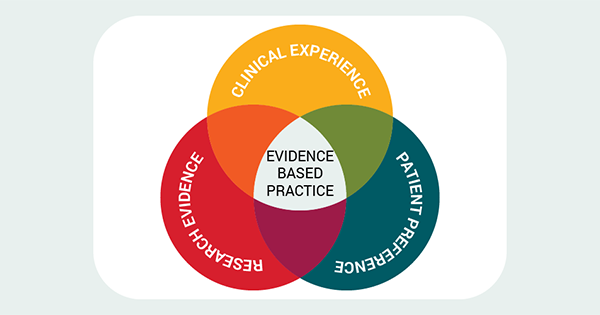We saw how focus groups, in contrast to one-to-one interviews, may cause participants’ thoughts and feeling about a topic to change and develop as a result of the discussion within the group and how this may be one of the aims of the research process. We also discussed how the researcher must be careful as to who is involved in a focus group to ensure all of the group members feel empowered to speak and have their views and understandings heard.
We identified that there are some logistical and ethical issues a researcher may need to consider before undertaking a focus group. One major practical issue is getting access to a sample, which is the topic covered in this paper in the mini-series.
Sampling for the focus group
Getting together the people for a focus group is a form of sampling. Sampling is the name given to the process by which researchers gather the participants they need for their research. The approaches to doing it vary according to the type of research being undertaken. Focus groups sit firmly within the qualitative research paradigm, that is research which seeks to answer questions about how people see and experience the world, as well as their opinions about things. The alternative is quantitative research, which seeks to quantify answers.
Focus groups are frequently used in qualitative methodologies like grounded theory, general qualitative enquiries and sometimes phenomenology. Focus groups may be the only form of data collection, method used in the research study. They can also be combined with one-to-one interviews, used to generate the topic guide for subsequent one-to-one interviews, or as a means of generating questionnaires, the content of which can be trialled with the group (Pope and Mays, 2020).
The ideal size of a focus group is said to be between 7 and 12 participants (Pope and Mays, 2020) although some commentators think smaller groups are better with say 6 to 8 participants (Creswell and Creswell, 2018). In truth the size of the group is a matter of personal preference and judgement, and will depend on the topic being discussed, the heterogeneity of the group, the skills of the researcher and where the focus group is taking place, for example face-to-face or online.
The researcher needs to choose the membership of the group to reflect the needs of the research. That is to say, in common with most qualitative research, people are chosen to participate in the research because they have had the experience that is being investigated and so they fit the purpose of the study. The exact approach to undertaking purposive sampling will vary according to the nature of the question being asked (Creswell and Poth, 2017). If the research is investigating the usual turn of events the sample will be drawn from people who are similar homogenous in having shared an experience, for example the management of a venous leg ulcer. Conversely, if the research is more concerned with a broad sphere of experiences, then the group membership may be broader and, heterogenous, for example people who have had wound care for a variety of reasons.
Very often, the study samples used in focus groups are drawn from groups of people whom the research has easy access to. This form of sampling is called convenience sampling and is a practical response to the challenges of undertaking research which is often unfunded or undertaken on a tight budget. Convenience samples are regarded as being the weakest form of sampling (Polit and Beck, 2020) because being drawn from a small population, the people in them could be unlike the wider population, for example because they all attend the same college or clinic. Convenience samples are also more likely to be homogenous as a result of being drawn from a small population which may not fit the needs of the research.
There are further issues with convenience samples in healthcare research in that such research is often undertaken by clinically active staff who, conveniently, draw their sample from among the patients they know. While this creates a convenient sample and many patients will claim to be happy to be involved, it also generates questions about how voluntary and free from coercion such involvement can truly be. This issue is compounded further where the potential participants have some vulnerabilities, for example a mental health issue or disability, which may need consideration before attempting to recruit a convenience sample – e.g. by using a third party to recruit (Ellis, 2023b).
Of course, some participants in a focus group led by one of their clinic nurses may feel they cannot talk freely about their feelings, especially if these are negative about the clinic. Others may feel they have to say what the researcher or nurse, wants to hear, which is a form of Hawthorn effect (Jolley, 2020), and this further invalidates the data collection process.
Because the sample is drawn from a small population the ability of the research to be generalised, that is the findings extrapolated to other similar people in the wider population (Andrade, 2021), is diminished, if not altogether absent. Some qualitative researchers would claim, however, that they are not aiming to undertake research which is generalisable (Carminati, 2018), rather they seek for the findings to be broadly transferable. Convenience sampling is fit for that purpose.
Some focus group samples may be drawn from existing groups of people, e.g. classes of students or nurses in a clinical setting. This makes sampling easier and, to add to the convenience, such people are often found to be in the same place at the same time, therefore scheduling a focus group becomes easier to do. Such groups are however prone to having an established order of behaviour with some individuals being more vocal than others, meaning the findings of the focus group are subject to existing group dynamics. There is also the potential for power imbalances within the group, for example with managers and staff present, which may lead to a form of self-censoring in some individuals and, depending on the topic, this may limit the robustness of the focus group as a data collection tool (Pope and Mays, 2020).
Conversely, established groups of people may not need to be made to feel comfortable with each other and so existing dynamics may enable the focus group to get down to the business in hand much quicker.
Conclusion
In this paper we have identified how there are a number of considerations about how a sample is derived for a focus group interview. We have seen that the researcher has to make a number of decisions about what they want from the focus group and that these decisions must be used to guide the sampling process. We have touched on the potential ethical issues with sampling for focus groups, including the use of participants known to the researcher, and how this might also impact both on the voluntariness of participation and what the participants involved have to say during the focus group.
We have seen that the dynamics of existing groups can also affect the focus group process and potentially invalidate the finding of any research.
In the next paper in this mini-series about focus groups, we will consider how the focus group itself might be undertaken, the role of the researcher and any other data collectors present as well as thinking about the physical and online environment. We will consider how the researcher might need to facilitate the focus group as well as giving some thought to how different forms of focus group, (i.e. in person or online) might impact on how the process is undertaken.







